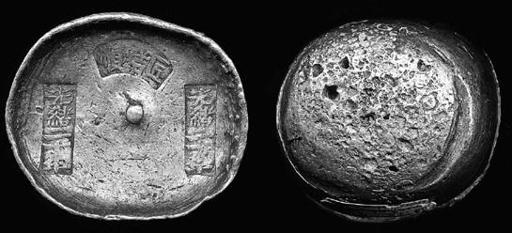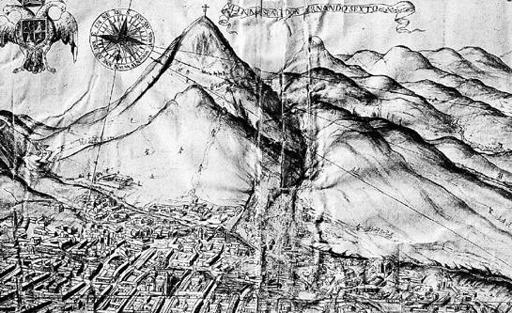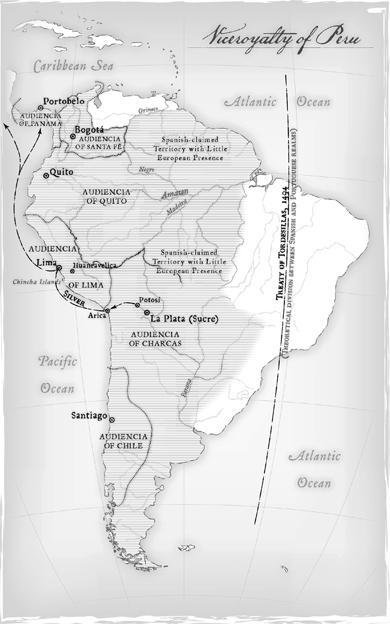1493: Uncovering the New World Columbus Created (24 page)
Read 1493: Uncovering the New World Columbus Created Online
Authors: Charles C. Mann
Tags: #Americas (North; Central; South; West Indies), #Expeditions & Discoveries, #United States, #Colonial Period (1600-1775), #History


Called
sycee,
these small silver ingots were used in the Ming and Qing eras instead of coins. The stamps include the mark of the silversmith (difficult to read, but probably Shunxiang Smithy) and the date (the twentieth year of the Guangxu emperor’s reign, or 1895). (
Photo credit 4.3
)
China was the world’s biggest economy. Its “silverization” meant that tens of millions of wealthy Chinese suddenly needed chunks of silver for such basic tasks as paying taxes or running a business. It stoked a voracious demand for the metal. Inconveniently, China’s silver mines were just as played out as its copper mines. Businesspeople had trouble laying their hands on enough silver to pay for anything, including their taxes. The sole nearby supply of silver was in Japan. On an official level, China and Japan were not friendly—indeed, the two nations were soon to fight a war in Korea. To get the silver necessary to keep business going, merchants turned to
wokou.
Businesspeople sold silk and porcelain to brutal men with silver, then turned around and used the silver to pay their taxes, which in turn was spent on military campaigns against those brutal men. The Ming government was at war with its own money supply.
Unable to reconcile the contradiction, Beijing finally allowed Fujianese merchants to trade overseas without fear of punishment. Now acting in the open, they sent thousands of people—younger sons from extended families—throughout Asia to establish beachheads for later trading or extortion. Even a backwater like the Malay village of Manila may have had as many as 150 Chinese residents in 1571, when Legazpi showed up. Hundreds more apparently resided elsewhere in the islands. The unexpected discovery of silver-bearing foreigners in the Philippines was, from the Chinese point of view, a godsend. The galleons that brought over Spanish silver were ships full of
money.
“THE TREASURE OF THE WORLD”
How did silver get on those galleons? According to the stories, it began with a man named Diego Gualpa or Hualpa in April 1545. He was out walking at thirteen thousand feet, possibly looking for a lost llama, on a plateau in the Andes Mountains, at the southern tip of Bolivia. (The altitude, amazingly, was not extreme for the Andes, where most of the population lives on high plains that are almost at that level.) No trees, no animals, no crops, no homes—just a bare, dome-shaped hill, clawed by wind and snow, surrounded by still taller mountains splashed with ice. Stumbling on a high ridge, he steadied himself by seizing a shrub. It came out of the shallow soil. Beneath it, in the hole made by its roots, was a metallic sparkle. Gualpa or Hualpa was on a ledge of silver ore three hundred feet long and thirteen feet wide and three hundred feet deep—the biggest silver strike in history.
Typical ores are at most a few percent silver. The ledge was as much as 50 percent. It was so rich that the Spaniards didn’t know how to purify it—they kept boiling away the silver. Andean Indians had some of the world’s most advanced metallurgy. Locals were able to do what the foreigners couldn’t, in low-temperature smelters fueled by dry grass and llama dung. Soon thousands of native smelters sent their smoke into the chill Andean air. By the early 1560s, two decades after the first strike, the Imperial Villa of Potosí, to give the new boomtown its formal name, had a population of as much as fifty thousand. It would have had even more if Spain hadn’t done everything it could to keep people out. Despite these efforts the count grew to 160,000 by 1611. Potosí was as big as London or Amsterdam. It was the highest, richest city in the world.
Lawless, louche, and luxurious, Potosí set the template for countless boomtowns afterward. Courtesans in Chinese silk walked on Persian carpets in rooms sprinkled with scented water. Miners gave fortunes to beggars and spent fortunes on swords and clothes and elaborate celebrations. In a market-stall bidding war, two men drove the price for a single fish to five thousand silver pesos, many years’ income for most Europeans. Another man showed up for a duel in “a brocaded tunic the color of mother-of-pearl, studded with diamonds, emeralds, and strands of pearl.” At one celebration a city street was actually paved with silver bars. “I am rich Potosí,” crowed the city coat of arms, “the treasure of the world, the king of the mountains, the envy of kings.”

Shown in this drawing from 1768, Potosí spread across the plains below the silver mountains. Cold, crowded, and violent, it was the highest city in the world and probably the richest. (
Photo credit 4.4
)
Enviable, perhaps, but also uncomfortable. Wind and altitude conspire to make the town amazingly cold and the terrain almost lifeless. The air is so thin that the first time I visited I got woozy carrying my suitcase up a flight of stairs. Humiliatingly, my host’s ten-year-old sister scooted to my side, grabbed the bag, and ran with it to my room. During the silver era every cup of flour, every piece of clothing, and every scrap of wood had to be carried into the city by llama. Now Bolivia has cars and trucks, but many houses in Potosí still lack heat, as they did in centuries past. In the morning my blanket crackled with frost. Seeing my blue lips, my host’s mother kindly melted a cup of coca tea.
Almost as important as the mountain of Potosí was a second Andean peak, Huancavelica, eight hundred miles northwest, which gleamed with mercury deposits. In the 1550s Europeans in Mexico discovered a way to use mercury, rather than heat, to purify silver ore. (Rediscovered, actually—the technique had been known in China for centuries.) Miners pulverized silver ore, spread the powdery result over a flat surface, typically a stone patio, then used rakes and hoes to mix in saltwater, copper sulfate, and mercury, forming a stiff cake. Men, mules, and horses walked over the cake, their footfalls providing the energy for a complex reaction that slowly forced the mercury to combine with the silver in the ore, forming a sticky amalgam. Workers poured water over the cake, washing away everything but the amalgam, which was then scraped into cloth sacks. In time the loosely bonded mercury and silver separated; mercury being a liquid, it dripped out of the sacks, leaving bagfuls of pure silver. After watching a demonstration of the technique, Viceroy Francisco de Toledo seized the Huancavelica mines for the crown, thus arranging what he called “the most important marriage in the world, between the mountain of Huancavelica and the mountain of Potosí.”
As long as the mercury lasted, the viceroy realized, the mines would no longer be dependent on Indian technology, which in turn meant that Spaniards could treat natives wholly as a source of labor. Andean peoples had a tradition of communal work that had been co-opted by the Inka to build a great highway system. Taking a page from the Inka playbook, Viceroy Toledo forced natives to deliver, as a tribute, weekly quotas of men to the silver and mercury mines—at the start, roughly four thousand a week each for Potosí and Huancavelica. As lagniappe, mineowners also imported several hundred African slaves each year. Sometimes it is said that the mines killed three to eight million people. This is an exaggeration. Still, conditions were appalling, especially at Huancavelica.
The entrance to the mercury mine was a great archway with pilasters and the royal coat of arms cut into the living rock of the mountain. Inside, the tunnels rapidly narrowed and spread out like jellyfish tentacles. Candles strapped to their foreheads, Indians hauled ore through cramped tunnels with next to no ventilation. Heat from the earth vaporized the mercury—a slow-acting poison—so workers stumbled through the day in a lethal steam. Even in cooler parts of the mine they were hacking away at the ore with picks, creating a fug of mercury, sulfur, arsenic, and silica. The consequences were predictable. Workers served in two-month shifts, often several times a year; after a single stint, many shook from the initial effects of mercury toxicity. Foremen and supervisors died, too—they also spent too much time in the mine. So determined were natives to avoid the mercury pits that parents maimed their children to prevent them from having to serve.
Huancavelica ore was refined in a ceramic oven; the mercury boiled off and condensed on the inside surfaces. If the oven were opened before it was cool—something mineowners, eager to start the next refining cycle, often insisted upon—the result was a faceful of mercury vapor. Numerous official inspectors urged the crown to shut down Huancavelica. But reasons of state always won out; the need for silver was too great. As the mineshafts went deeper into the mountain the inspectors urged that the state dig ventilation shafts. The first was not created for eight decades. Officials who dug up graves in 1604 reported that when miners’ corpses decomposed they left behind puddles of mercury.
5
Conditions at Potosí were less lethal, but no less inhumane. In near-complete darkness gangs of conscripted Indians carried hundred-pound loads of ore up and down dangling rope-and-leather ladders. Like ants on a string, one chain of men descended one side of the ladders while another chain climbed up the other. Initially Indians were given two weeks’ rest above ground for every week of work beneath the surface. Later the rest periods vanished. When miners hit a patch of low-quality ore, they were forced to work harder to make their quota of silver. Failure to meet the quota would be punished by whips, clubs, and stones. Horrified antislavery activists denounced the “hellish pits” of Potosí. “If twenty healthy Indians enter on Monday, half come out on Saturday as cripples,” one outraged priest wrote to the Spanish royal secretary. How, he asked, could Christian leaders allow this?

Click
here
to view a larger image.

The itinerant artist and editor Theodorus de Bry never saw the mines of Potosí, but he captured something of their cruelty in this engraving from the 1590s. (
Photo credit 4.5
)
Part of the reason that the rule of law broke down beneath the surface was that it had broken down above the surface as well. Violence of every conceivable variety flourished in Potosí. Construction workers found murder victims stuffed into walls or shoved under rocks. Tailors rioted after a guild election, forcing one faction leader to seek shelter in an Augustinian monastery. When the government sent agents to arrest him, the friars jumped on them with drawn swords. City council members wore chain mail at meetings and carried swords and pistols. Political disputes were sometimes resolved by duels fought right in the room. As one may imagine, the ambience was hostile to family life. Despite Potosí’s huge population, no child was born there to a European for more than half a century. So unexpected was the first birth that the baby’s arrival—on Christmas Eve, 1598—was widely attributed to the miraculous intervention of Nicola da Tolentino, the patron saint of infants.